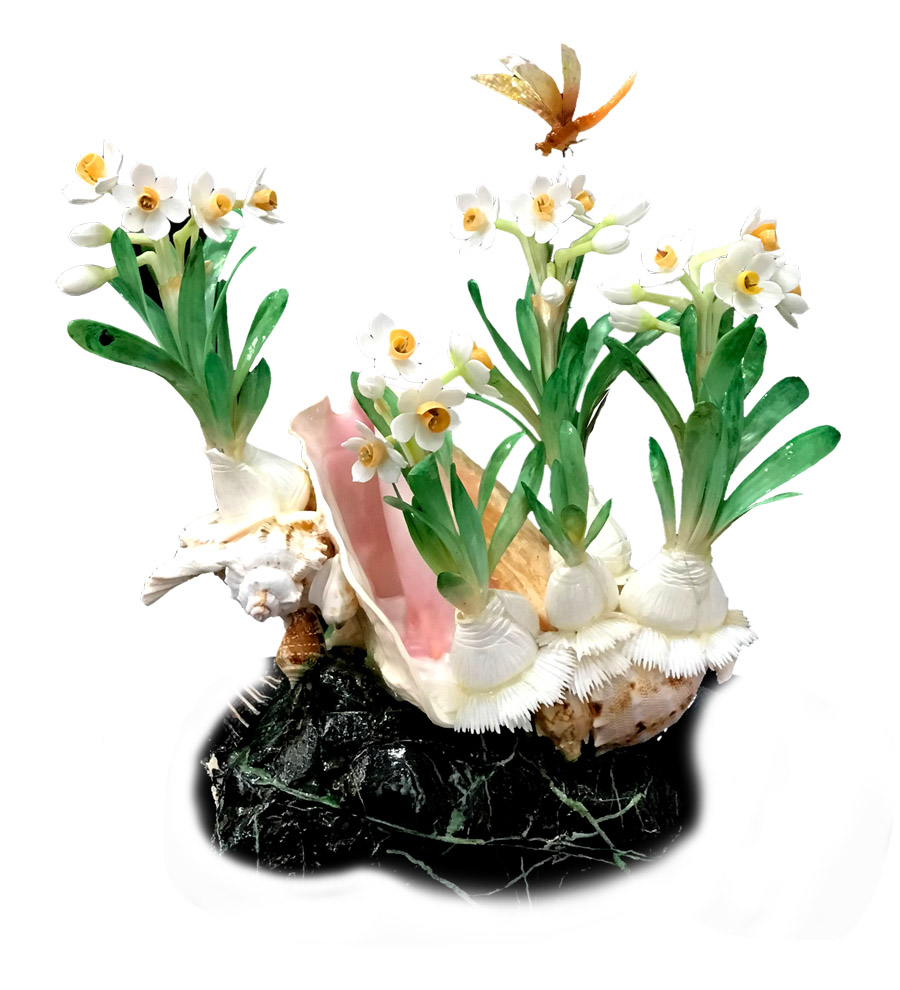

As some parts of shells are fragile and hard to be carved, every step is crucial and needs a lot of practice, Jiang says.
Pingtan's shell carving made its presence felt abroad in the 1970s and '80s, with related products making their way to more than 40 countries and regions.
However, the market economy reform and business restructuring at the beginning of the 1990s dealt a blow to the Pingtan shell plant, which was eventually shut down in 1999.
Yet, Jiang didn't give up on the trade and has spent spare time practicing and honing his skills.
"Ever since I got in touch with it, I haven't thought of dropping it," Jiang says.
Years of practice has rendered him a personal style, including color combination and sculpting methods.
He's especially good at relief and circular engraving skills. In particular, the circular engraving enables viewers to see vivid images from different angles.
"It is extremely difficult and requires a shell sculptor to carve in multiple directions," says Zhou Ming, Jiang's apprentice.
"There are very few artisans who have inherited the art of circular engraving in shell carving, which requires artistic creation and years of experience," Zhou adds.
Zhan Lixin, head of the Pingtan shell carving art research institute, says the plant's failure was caused by a lack of innovation, with monotonous elements of mountains, birds and flowers. A few senior craftsmen opened private plants later, but soon disappeared as a result of high labor costs brought by the complex shell carving procedure.
The craft has been very close to Zhan's heart after he visited the local shell plant in his childhood in the late 1960s.
"I stumbled upon a shell-carved work in 1998 and I couldn't keep my hands off it," Zhan says.
Since then, he and his brother, Zhan Sheng, have collected more than 1,000 shell-carved works.
In 2012, Zhan Lixin visited coastal areas in East China's Zhejiang and Jiangsu provinces and found Pingtan shell carving had its distinctive characteristics and value.
"I wanted to restore the shell carving industrial chain, step by step," Zhan Lixin says.
He then approached veteran craftsmen, including Jiang, to come up with a series of new shell carving artworks. Their efforts paid off, as the works gained popularity on the market. In 2015, the related revenue reached 1 million yuan ($147,400).
As the Pingtan international tourism island has taken shape, local shell carving has been given more exposure. Related works have frequently been on display at various cultural and tourism expos.
In 2019, Pingtan shell carving was named a provincial intangible cultural heritage in Fujian. To date, there are more than 20 shell carving selling stores near popular scenic spots in the province.
Zhan Lixin's says shell carving has to meet modern aesthetic standards and get support from senior artisans and the authorities to enjoy a comeback.
"Now is the right time," he says.
"The increasingly prosperous tourism market has given new opportunities to the re-emergence of Pingtan shell carving, and the government is supportive of its development of Pingtan shell carving, both of which undoubtedly create a good environment for the industry to thrive," he adds.
In 2021, Jiang and his disciple, Zhou Ming, established a shell carving art museum, where Jiang has explored ways of publicizing the craft's history and techniques.
"I got involved with shell carving when I was in primary school, and now I want to pass this skill to the next generation to cultivate their interest from a young age," Jiang says. "I hope to plant the seeds for the inheritance of Pingtan shell carving."
Yang Jie contributed to this story.